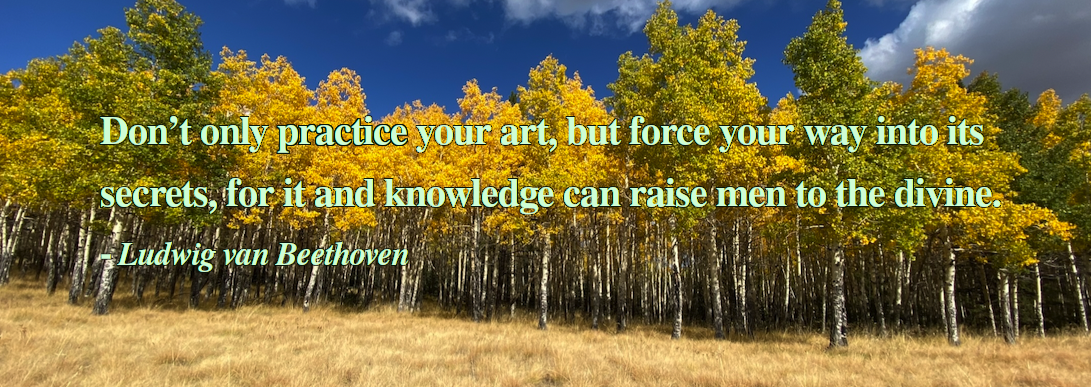Along the Colorado front range, the Rockies rise abruptly from the treeless and flat High Plains. The mountains provide a forever-reference to the west, a tall and jagged and solid compass viewed from anywhere.
As the sun sets in that direction, and after sundown, as evening fades close to darkness but when the western sky is still aglow, the details and relief on the hills fade to black, with the fading light now behind them.
For a brief period, before full night, only the outlines of the mountains are visible, the space below that line that delineates the mountain tops and ridges become full black, the sky still glowing softly but clearly behind and highlighting that outline — in fact, creating it.
With a minor intentional twist in perception, the order, the layering of those two surfaces switch in the mind.
The illuminated sky moves to the foreground, letting the black mountains become the background. Sky then appears as a bright curtain hanging from the heavens, with a jagged and random bottom edge that doesn’t reach the earth, one that you could duck under into the blackness behind — the blackness that was once mountains, but now appears as an infinite void beneath and behind that sky curtain.
Once seen, or once conjured in your perception, any evening this illusion presents itself in that near-dark late evening when the light of the setting sun hasn’t completely faded.
Once seen, the illusion reveals itself spontaneously.
Then, the void behind beckons: what is under that curtain? How far into the blackness could you go? There is no discernible limit.
Could you venture over to that space and walk into it, touch the bottom edge of the curtain, turn and look back at the other side? Does it glow on the far side as well? Is it a soft and flowing curtain, or is that edge hard, firm, even sharp?
As I contemplate the illusion, I imagine that this represents some edge, some curtain in consciousness, leading into an endless, unknown, and unknowable emptiness. For in emptiness, there can be no knowing.
And the discovery of this illusion reminds me of some real and true corner of my mind. That edge of the light, that jagged and random border between light and dark, has been torn away by some mysterious force, like a massive sheet of ripped paper stretching from horizon to horizon.
Behind the light, behind all light, is a black unknown void, unreachable, distant, but one that beckons in its infinity and its silence. All that’s required is to grab a corner of the light, the illuminated surface of known and noble experience, and tug.
Tear away that surface, that awake and aware movie screen, tear it all the way across, from edge to edge, but leave some of it there so you still can see the contrast, and you can almost touch the boundary between light and black, between known and unknowable, between illuminated consciousness living in the dark empty void necessary to create anything that exists — for only in the contrast between is and nothingness can that Is, the I Am, come to be.
Author’s Note: When first I wrote this, and then reread it, I resisted publishing it. It felt vague, weird, and came across as a thin attempt to be mystical and philosophical. But I chose to honor the voice, I respect that I was reaching for some meaning in that pervasive illusion of the torn horizon and the odd compulsion to reach under the boundary and venture into that unknown.



